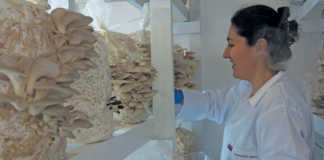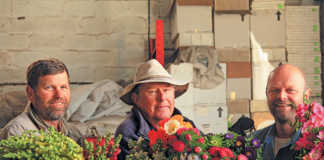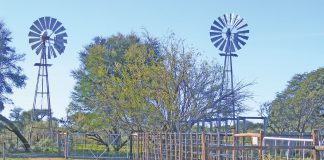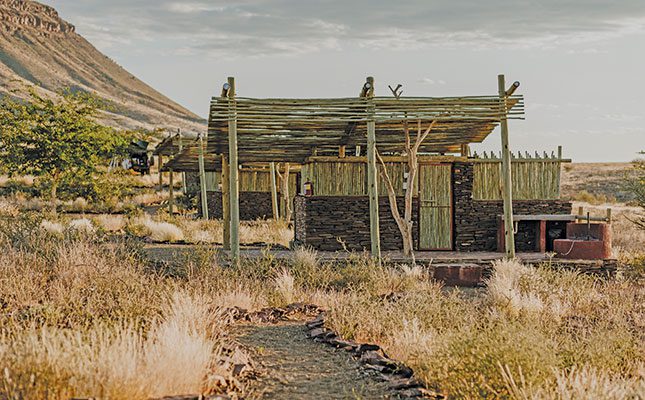
Photo: Jo-mari de Klerk
According to Kobus de Klerk, who owns the Mount D’Urban Campsite in partnership with his wife Kirsty and his parents Boeta and Mariette on the family farm near Helmeringhausen, the tourism concern has played a vital role in keeping the farming business afloat during taxing seasons of severe drought.
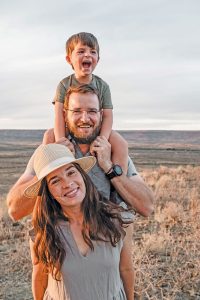
“Namibia went through a devastating drought between about 2012 and 2019. The campsite played a valuable role in 2019, when the drought was at its worst.
READ The challenges facing Namibia’s cattle producers
The campsite was able to supplement enough income to cover some of the farm’s running costs.
In some ways it took pressure off having to sell more stock to buy feed during the drought. Value-wise, in today’s market, it could probably be worked back to roughly 200 marketable lambs,” he says.
The farm is situated in the south-western part of Namibia, 23km north of Helmeringhausen.
Separated by the Swartrand mountain range, it stretches about 9 000ha from the edge of the mountain range westward, while the remaining 13 000ha is situated on top of the Swartrand range, extending eastward for about 10km.
The farming business consists primarily of commercial cattle and goat production.
In the 1970s, the farm belonged to Consolidated Diamond Mining and was drawn on to supply the operations in Oranjemund with meat products for their workforce.
Remnants of the old feedlots can still be found on the farm today. Coming from the Eastern Cape, the De Klerk family partnership bought the farm in December 1985.
It was stocked with cattle and they introduced Angora goats, which was a first for the area, as karakul had predominantly been farmed in the region.
“My uncle would come to the farm twice a year from Graaff-Reinet with his shearing team, and the mohair would be transported to Port Elizabeth. Due to the nature of the veld and the climate of the area, it made reproduction difficult.
With lambs getting stuck in thorn bushes and receiving periodic winter rain causing hypothermia, it was decided to transition the small stock herd to sheep and Boer goats. Forward 30 years, and the farm’s herd consists of Nguni, Drakensberger and Bonsmara cattle, Dorper sheep, and Boer goats,” Kobus says.
In 2013, the couple had a small herd of roughly 50 Bonsmara cows on the farm as an investment while working full time.
However, the additional herd of cattle put pressure on grazing during the drought period, and they were forced to think out of the box.
Mount D’Urban
“I knew that we had to protect the farm’s grazing in case the drought worsened. In the interest of the core herd, that meant selling cattle. Kirsty and I started brainstorming to find alternative opportunities to make a living on the farm without putting additional pressure on the main resources that the farm offered my parents,” says Kobus.
“After months of research and cost estimates, we decided that we would be able to afford a campsite if we sold the cattle to finance the new venture. In early 2017 we moved to the farm to finalise our planning to execute the project. The decision meant we would be able to take pressure off the farm’s grazing and diversify our stream of income.”
Fine balance
They eventually decided on a well-designed and sustainable campsite as it offers a baseline entry to the tourism industry in Namibia without extensive financial investment.
This called for a fine balance between constructing a camp offering privacy and luxury, and input cost.
Because their target market would be guests looking for a stopover, they invested more in the luxuries that the campsite could offer.
READ Preventive maintenance saves you time and money
They aimed to make it a spot where guests could rest, even for a couple of days, during long-distance drives which are inevitable in a vast country such as Namibia.
According to Kirsty, the position of the camp was decided by pure coincidence. A family friend who grew up on the farm passed away in 2008. Mount D’Urban was always close to her heart.
The De Klerks consequently decided to build a memorial for her at the foot of the mountain, not far from the campsite.
The memorial is within walking distance from the farmhouse and is a favourite stroll for the family with the dogs in the late afternoons.
Campsite location
“Kobus and I joined in on one of these walks one day, and on our way back, stopped on a ridge close by; out of nowhere Kobus told me ‘this is where I’m going to build the campsite’.
The main road cuts off roughly 800ha of land from the main farm and was used only to stock the farmworkers’ donkeys and horses, mostly unproductive land as far as the farm was concerned.
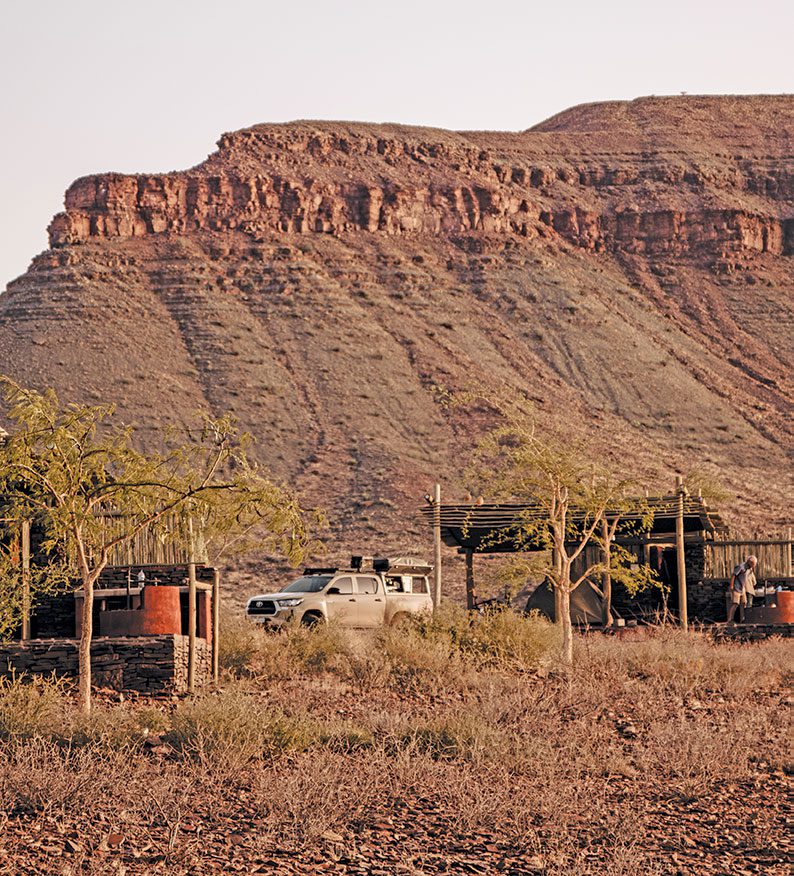
“The land earmarked for the campsite had a working, yet old borehole, a good, elevated view of the valley below, and is hugged by Mount D’Urban, giving the location an open yet protected feeling. The proximity of the main road would also be able to provide easy and convenient access to the location,” she says.
Natural materials
A lot of thought was put into the design of the campsite.
The couple aimed to blend the structures into the natural area, and using predominantly natural materials from the area for the buildings would allow them to do this.
They decided to build the structures from rock sourced on the farm, making sure not to collect any materials around the campsite as this would change and disturb the natural area.
The building teams had strict parameters around each campsite to limit the construction footprint.
Tree planting
They planted 20 new trees, two at each campsite, that benefit from any wastewater. Electricity to the campsite is supplied through solar, with gas geysers at each campsite.
The blue gravel for the access roads was sourced from the dry river bed behind the farmstead.
“Construction on the campsite started in August 2017 and by March 2018 we turned the lights on for the first time.
READ How to run a successful family business
“By that stage, we had minor finishing work to be completed around the campsite such as installing the pool, finishing the entrance, and planting the trees,” says Kobus. “It has been a process of constant improvement ever since.”
Namibian Tourism Board
The campsite had to be registered with the Namibian Tourism Board (NTB). This involved registering the campsite as a business and having a lease agreement in place with his parents.
Once this was done, the NTB inspected the premises to certify the site before completing the registration.
After the initial approval, the NTB conducts yearly inspections to make sure the standards are maintained.
Additionally, the De Klerks had to get approval from Roads Authority Namibia to construct a new public access to the campsite.
Mass of mountain
The mountain on which the campsite is situated was named by a Scotsman in the 1800s.
On 10 September 1836, Sir James Edward Alexander, of the 42nd Royal Highlanders, set off on an expedition that would eventually lead him to set up camp close to the mountain he described as being “a bold mass of mountain, almost 600 metres high, with a square top, scarped cliffs of red sand stone and having attached to it a conical hill”.
He named the mountain after his friend, the governor of the Colony of the Cape of Good Hope, Sir Benjamin D’Urban.
Parents’ involvement
Asked about his parents’ reaction to the idea of a campsite, Kobus says, with a chuckle: “At first, there was a lot of mixed reaction.
My mom thought it was a great idea, my dad thought we were mad. In saying that, he quickly got on board to help us make a success of it. Today he mostly runs the campsite on our behalf!”
He says the agritourism concern benefits the farm in two ways: first, it diversifies the stream of income on the farm, taking pressure off the land and grazing, and offering a buffer during the years they receive less rain.
Second, for Kobus and Kirsty and their son Joshua, it is a positive step in securing a sustainable future when they move to the farm one day.
They are currently living and working in Australia but are determined to return to Africa in the future.
“We cater to everyone; we have had guests from Canada through to Japan and everyone in between,” says Kirsty.
“Our guests are almost a 50/50 split between international and local/Southern African Development Community. Depending on the time of year these ratios vary,” she adds.
Email Kirsty de Klerk at [email protected]











